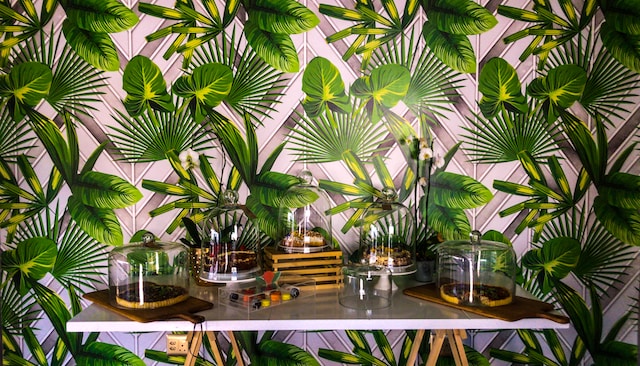Introduction:
In today’s fast-paced world, finding moments of peace and tranquility is essential for our well-being. One way to achieve this is by creating a healing garden, a serene outdoor space designed to promote relaxation and rejuvenation. In this article, we will explore some tips and tricks to help you create your own healing garden.
1. Choose the Right Location:
The first step in creating a healing garden is selecting the right location. Look for an area in your yard that receives ample sunlight and has good drainage. Consider the proximity to your home and any existing structures or trees that can provide shade and privacy.
2. Design with Nature in Mind:
When designing your healing garden, aim to create a space that harmonizes with nature. Incorporate elements such as flowing water, natural stone pathways, and native plants. Use organic materials and avoid synthetic chemicals to maintain an eco-friendly environment.
3. Create Zones for Different Activities:
Divide your healing garden into different zones to cater to various activities. For example, you can have a meditation area with comfortable seating, a yoga space with a soft mat, and a reading nook with a cozy chair. This allows you to engage in different healing practices within the same garden.
4. Embrace the Power of Plants:
Plants play a crucial role in a healing garden. Choose a variety of plants that appeal to your senses, such as fragrant flowers, herbs, and soothing foliage. Consider incorporating plants with healing properties, like lavender for relaxation or chamomile for stress relief. Research the specific needs of each plant to ensure they thrive in your garden.
5. Add Water Features:
The sound of flowing water can have a calming effect on the mind and body. Consider adding a water feature, such as a small pond, fountain, or waterfall, to your healing garden. The gentle sound of water can drown out noise pollution and create a peaceful ambiance.
6. Incorporate Sensory Elements:
Engaging your senses is an important aspect of a healing garden. Include elements that stimulate touch, sight, smell, and sound. For example, wind chimes can create soothing sounds, colorful flowers can please the eyes, and textured plants can be touched and felt. Fragrant herbs and flowers can fill the air with delightful scents.
7. Provide Comfortable Seating:
Make sure to include comfortable seating options in your healing garden. This allows you to relax and fully immerse yourself in the tranquil environment. Choose seating that is weather-resistant and ergonomic, ensuring maximum comfort during your healing sessions.
8. Create Privacy:
Privacy is essential for creating a serene space. Use tall plants, trellises, or fences to create a sense of seclusion in your healing garden. This will help you feel more at ease and allow you to fully unwind without distractions.
Conclusion:
Creating a healing garden is a wonderful way to bring peace and serenity into your life. By following these tips and tricks, you can design a space that promotes relaxation, rejuvenation, and overall well-being. Remember to personalize your garden to reflect your own tastes and preferences. So, go ahead and embark on this journey of creating your own healing garden, and enjoy the countless benefits it brings to your life.




